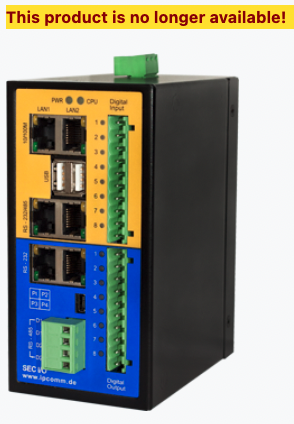The U.S. Cybersecurity and Infrastructure Security Agency (CISA) last week released an advisory to inform organizations about potentially serious vulnerabilities affecting ipDIO telecontrol communication devices that are no longer supported by the vendor.
ipDIO, made by Germany-based IPCOMM, is designed to record analog and digital inputs from switches, counters, sensors and other devices, and it supports various industrial protocols. According to CISA, the device is used by organizations worldwide.
 Aarón Flecha Menéndez, an ICS security consultant at Spain-based cybersecurity firm S21sec, informed IPCOMM through CISA in August 2021 that the ipDIO product is affected by four vulnerabilities, including two high-severity code injection issues and two medium-severity persistent cross-site scripting (XSS) flaws.
Aarón Flecha Menéndez, an ICS security consultant at Spain-based cybersecurity firm S21sec, informed IPCOMM through CISA in August 2021 that the ipDIO product is affected by four vulnerabilities, including two high-severity code injection issues and two medium-severity persistent cross-site scripting (XSS) flaws.
The researcher told SecurityWeek that exploitation of the vulnerabilities could allow a remote attacker to take complete control of the device and cause disruption. However, exploitation requires user interaction (e.g. accessing certain sections of the web-based management interface) and in some cases access to the web interface.
In addition, the researcher has not identified any internet-exposed devices through simple searchers (e.g. Shodan, ZoomEye, FOFA) but admitted that he did not attempt to conduct searches using more advanced techniques.
The ipDIO product has reached end of life (EOL) and no longer receives updates. The vendor has advised customers to upgrade to its ip4Cloud device, which is the successor of ipDIO.
Learn more about vulnerabilities in industrial systems at SecurityWeek’s ICS Cyber Security Conference
IPCOMM told SecurityWeek that it coordinated the release of the advisory with CISA, which has also shared some general recommendations for preventing potential attacks.
The vendor said it cannot disclose information on how many customers still use the EOL device, but the researcher believes it can still be found in energy sector companies, particularly at electricity distributors in Europe.
“Based on my experience with this and other devices for which I have reported vulnerabilities, we are often unaware of where the devices are used and the infrastructures that use them,” Flecha Menéndez explained.
Related: GE SCADA Product Vulnerabilities Show Importance of Secure Configurations
Related: Moxa MXview Vulnerabilities Expose Industrial Networks to Attacks
Related: New Vulnerabilities Can Allow Hackers to Remotely Crash Siemens PLCs














